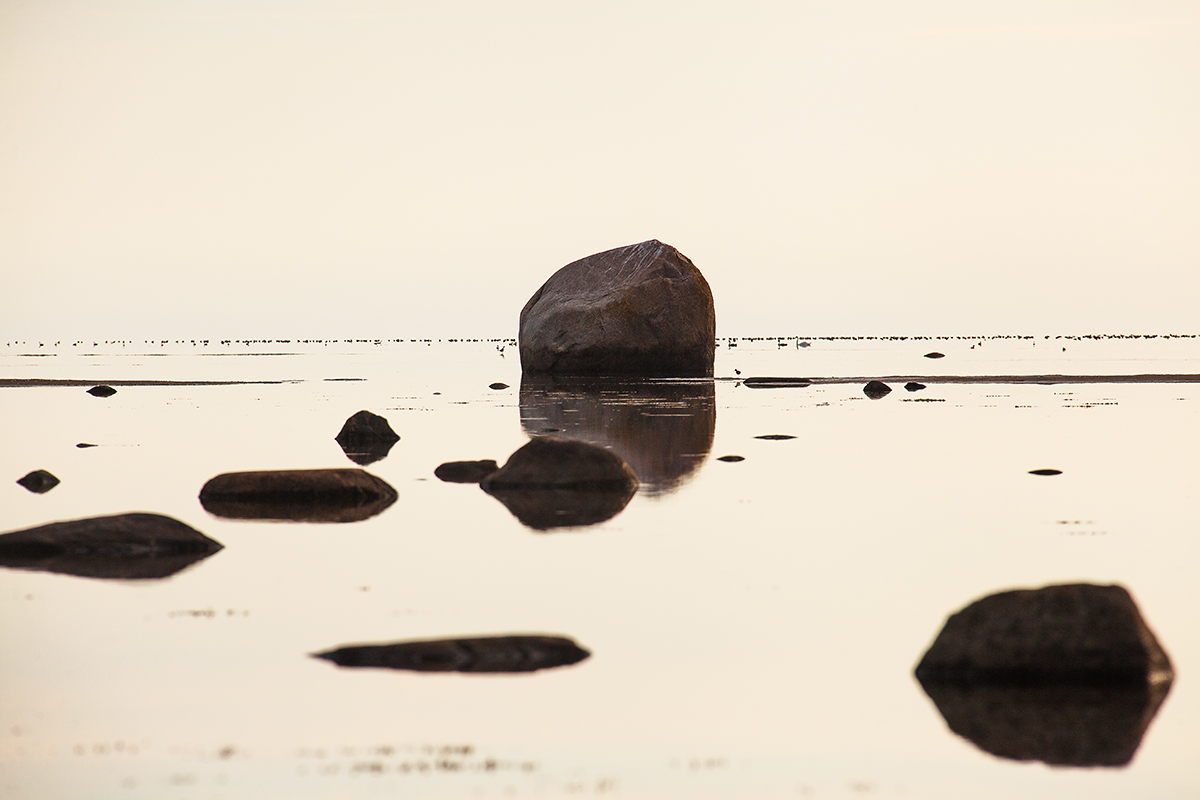The migration of today’s freshwater species to Estonian waters began about 2,500 years ago
Geologically speaking, the Baltic Sea is a very young water body. The formation of the Baltic Sea is related to the warming of the climate at the end of the ice age, due to which the extensive ice sheet covering the area quickly melted.

The Baltic Sea was born of the meltwater of ice sheets. At first, the area in front of the edge of the retreating glaciers was vacated, where meltwater accumulated and glacier lakes began to form; following their growth and agglomerating, a large ice lake was formed in Southern Sweden, where ice lake sediments almost 15,000 years old have been found [1]. It was the first stage of the Baltic Sea – the Baltic Ice Lake.
The Billingen disaster, which took place about 11,600 years ago, ended the Baltic Ice Lake phase – the Billingen bedrock passing through Central and Southern Sweden was freed from the retreating glaciers and a shortcut to the Atlantic Ocean opened up for the lake water. Due to the rising of the ground freed from under the pressure of the ice sheets and the ever-increasing amount of meltwater, the water level of the Baltic Ice Lake, which had risen significantly above the ocean levels over time, dropped by 25 metres in a few years. The new water body, connected to the world ocean, was called the Yoldia Sea [1].
At first, the Yoldia Sea had a wide connection with the ocean, which made the sea a water body with moderate salinity. However, as the rate of ascent of the land released from the pressure of the ice sheets exceeded the rise of the ocean level, the connection of the Yoldia Sea to the world ocean began to narrow. About 10,800 years ago, the Yoldia Sea became an almost isolated freshwater body – Ancylus Lake, whose water level rose considerably during the following centuries due to the meltwater of the retreating ice sheets. At first, the Ancylus Lake started to extensively cover the mainland, but then, probably due to the opening of a new outflow into the ocean, the water level stopped rising. However, as the world ocean level was lower than that of the Ancylus Lake, the new connection did not lead to a significant inflow of salt water [1].
The Ancylus Lake stage ended 8,500 years ago, when the ocean water level had risen to such an extent that the inflow of salt water began. A new stage in the development of the Baltic Sea began – the Littorina Sea. It was characterised by a continuing rise of the ocean levels and the consequent increase in salinity and widespread advancing of the sea on the land. About 6,000 years ago, the level of the world ocean stabilised and the water exchange via the Danish straits decreased. This, together with the cooling of the climate and the increase in precipitation, led to a decrease in the salinity of the Littorina Sea [1].
The last stage of development of the Baltic Sea – the Limnea Sea – began about 4,500 years ago, when the connection of the Baltic Sea to the ocean via the Danish straits narrowed due to the lowering of the level of the world ocean, which led to a decrease in salinity in the Baltic Sea. The reach of the Limnea Sea differs little from the modern Baltic Sea [1].
The migration of today’s typical freshwater species into Estonian waters began about 2,500 years ago. Since the beginning of the Limnea Sea stage, the sea water has become 5–8‰ fresher and the Baltic Sea has been constantly receding from the Estonian mainland. At the time of the Limnea Sea, the climate was initially warm and dry sub-boreal, later a cool and humid sub-Atlantic climate. Birch, pine, and spruce forests were widespread along the coast [1].
There are researchers who distinguish the Mya Sea stage as the latest stage in the development of the Baltic Sea. The starting point of this stage is considered to be the arrival of the soft-shell clam from America to the Baltic Sea sometime in the sixteenth or seventeenth century [2].
Last modified: 15.11.2021
__________________________________________________
[1] I. Tuuling. Läänemeri ja selle nõo lahendamata saladused. Eesti Loodus, 7/2009. http://www.eestiloodus.ee/index.php?artikkel=2841.
[2] Müüameri. Eesti Entsüklopeedia. 2002. http://entsyklopeedia.ee/artikkel/m%C3%BC%C3%BCameri1